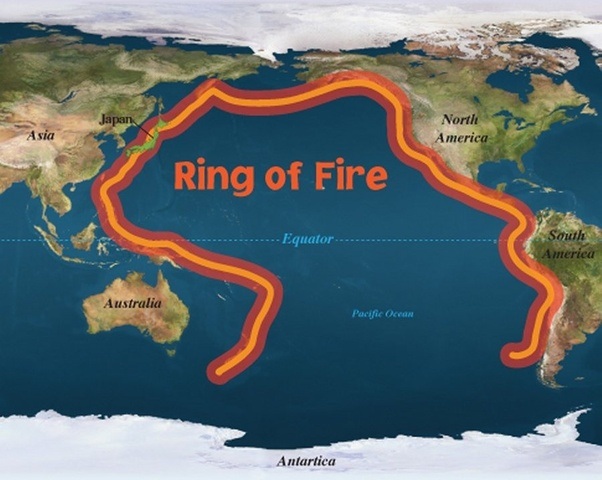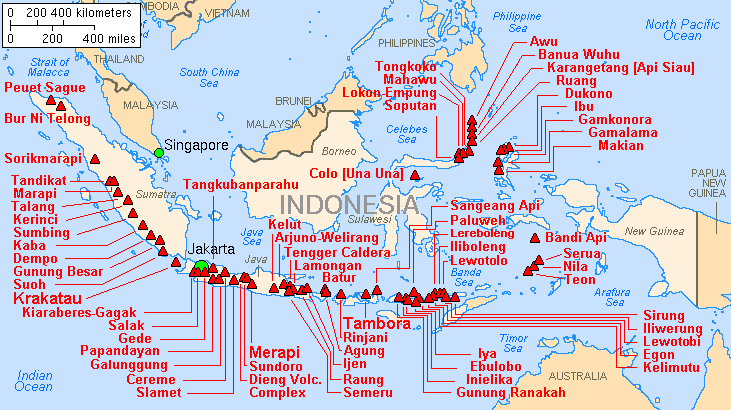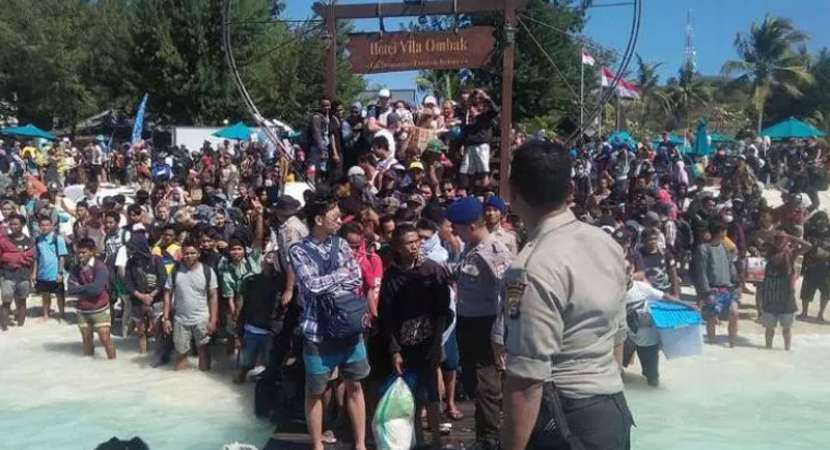- Home
- How Many People Live Around The Pacific Rim Of Fire? And Why It Matters!
How Many People Live Around The Pacific Rim Of Fire? And Why It Matters!
Volcanoes, Earthquakes and Tsunamis
The Pacific Ring of Fire is a string of volcanoes and sites of seismic activity around the edges of the Pacific Ocean. The tectonic activity along the Ring of Fire results in about 90% of the world’s earthquakes, including the
Valdivia Earthquake of Chile in 1960, the strongest ever recorded earthquake at 9.5 out of 10 on the Richter Scales

The Ring of Fire is also where an estimated
75% of the planet’s volcanoes are located, such as
Mount Tambora of Indonesia, which erupted in 1815 and became the largest volcanic eruption in recorded history.
All but three of the world’s 25 largest volcanic eruption of the last 11,700 years occurred at volcanoes in the Ring of Fire
Probably a good place to stay away from, right??
The problem is that some of most densely populated countries and cities on earth sit directly on the Ring of Fire.
Lima, Quito and Santiago in South America. San Diego, Los Angeles and San Francisco in North America.
Then you have whole countries with large, dense populations that are situated on the Ring of Fire. Japan (127m people), Philippines (103m people) and Indonesia (267m people).
The volcanoes in Indonesia are among the most active of the Pacific Ring of Fire – and there are lots of them!

Lombok August 2018
Recent events have reminded us of just how vulnerable Indonesia is, when a magnitude 6.9 earthquake hit Lombok on 5 August 2018. In the following days, a number of powerful aftershocks have hit the same region – one measuring 5.9 magnitude on 9 Augusts.
At the time of writing, 436 people have been confirmed killed and up to 350,000 have been displaced or directly effected by the earthquakes.
The vast number of people that are living on the Pacific Ring of Fire meant that further incidents will continue to occur. Whilst the frequency of volcanic and earthquake events does not seem to have increased over recent centuries, the population explosion in the region means that the effects of these events are becoming increasingly severe.
According to the Red Cross, aid groups are struggling to reach the epicentre of the Lombok earthquake, located in the northern, more residential part of the island. Their path is blocked by heavy debris, damaged jungle roads and the risk of further landslides.
So if we cannot prevent or reduce the regularity of such events, and we cannot reduce the population in the direct vicinity, then all we are left with is the ability to improve our reaction and capability after the events.
Multi Person Helicopter Rescue
Multi Person Helicopter Rescue may offer little to tackle the cause of the volcanoes, earthquakes and tsunami events, but as we have seen in Indonesia recently, the misery, suffering and loss of life continues long after the tremors have ceased.
Multi Person Helicopter Rescue can fly food, water and medical supplies in to cut-off areas, and then fly injured or trapped personnel out in the same
Heli-Basket; making rescue efforts more effective and efficient.
Hell-Baskets can be fitted out to become self contained water filtration units and generators and can be dropped by helicopters and running operationally in seconds.
Helicopters are already being used in the rescue effort; with the right equipment, training and forward planning, they could be so much more effective in limiting the life threatening situations that exist long after the actual disaster event occurs.
«
How Many High Rise Buildings are there in the world? A Day In The Life Of The Pacific Ring Of Fire! »

 The Ring of Fire is also where an estimated 75% of the planet’s volcanoes are located, such as Mount Tambora of Indonesia, which erupted in 1815 and became the largest volcanic eruption in recorded history.
All but three of the world’s 25 largest volcanic eruption of the last 11,700 years occurred at volcanoes in the Ring of Fire
The Ring of Fire is also where an estimated 75% of the planet’s volcanoes are located, such as Mount Tambora of Indonesia, which erupted in 1815 and became the largest volcanic eruption in recorded history.
All but three of the world’s 25 largest volcanic eruption of the last 11,700 years occurred at volcanoes in the Ring of Fire

One Reply to “How Many People Live Around The Pacific Rim Of Fire? And Why It Matters!”